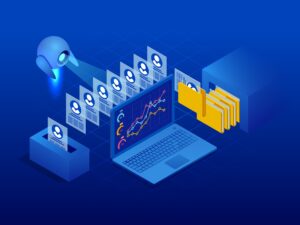Online education witnessed an exponential growth in 2020 and 2021. From anganwadis to advanced research centres, institutions at every level started exploring the possibilities of digital technologies for uninterrupted education.
Online education also helped these institutions to reach out to a large population with considerably less effort. The online mode of education has gained trust and popularity, and hybrid learning is now being practised in regular classroom mode.
The disruption caused by the pandemic in the last two years has immensely contributed to the expansion of education technology. The edtech (education technology) market in India was $2.8 billion by end of 2020 and is forecasted to grow 3.7 times to $10.4 billion by 2025.
As per an RBSA Advisors study, the market may reach $30 billion by 2030. The sector has also seen nearly Rs 30,000 crore fresh funding from domestic and international investors that helped over 6,500 ed tech startups.
In 2022, online education will enter a new stage in which a host of new trends will emerge to help expand and maximise possibilities. Innovation, expansion, and consolidation are the broad areas that will impact online education.
The five major trends to watch out for in the coming year are listed below.
1. Expansion to new segments
Though online mode of education has already reached both urban and rural areas, it encounters some hurdles in interior parts of India. The growth of internet users and increased adoption of digital technologies will drive the rapid expansion of online education to Tier III and Tier IV cities, towns, and even remote villages.
Apart from rural population, penetration to a broad segment of the population is also on the line. People in unorganised sectors such as daily wage manual workers, migrant workers, delivery staff, drivers, etc. need a formal certificate or degree to boost their opportunities, lower-grade staff in the public sector want promotions, and defence personnel need to secure a second career after concluding their service.
Online education will be a boon for these categories as it allows them to pursue a formal, higher education without disrupting their regular work or relocating to education-centric cities.
2. Focus on outcome & learner-centric approach
In the first round of expansion, online education focused on platforms and delivery. Today, the focus is on content and outcomes. Since online learners access the programmes at an individual level from a time and place of their convenience, it is necessary to reorient the online education approach to a more personal level. The new changes are towards improving learner-centric personalisation and outcome-oriented deliveries.
Artificial intelligence and machine learning will be deployed to create a personalised learning experience. It will help learners with different cognitive levels and from various backgrounds effectively pursue programmes relevant to their growth.
Going forward, online education will be able to suggest and emphasise the skills and employability of the learners, and the curriculum and syllabus will be revamped to cater to industry demands.
3. Blockchain
The application of blockchain is an upcoming trend in education technology space. It provides a decentralised, secure, and transparent education ecosystem. Using blockchain, edtech platforms can connect learners, professionals, and faculty to relevant courses and resources.
With smart contract capabilities, courses and lessons can be programmed, automatically delivered when certain conditions are met, and progress measured in real-time. Blockchain also helps institutions secure various documents and records including admission, attendance, payment records, and marks and grades.
Students can secure their degrees and certificates without safety concerns, access and get them verified whenever required. The cost of education will come down with the advent of blockchain as it eliminates many manual tasks.
4. Gamification and on-demand examination
Making learning a fun experience is a key feature of gamification in education. Categorising the lessons in short tasks or levels, offering badges, grades and ranks based on performance, and publishing leader boards are some of the gamification techniques used in online education.
Students, teachers, and parents can find out the progress of individual learners in real-time and plan future learning methods accordingly. It also helps continuous assessments along with the learning progress. Examinations will also witness some changes.
The learner-centric online education will enable students to request and schedule examinations whenever they’re ready for the test. On-demand exams will have more takers in the coming year.
5. Integration of VR, AR, XR in daily learning
Keeping a learner’s attention and concentration on a subject is a major challenge in the online mode of education. 2022 will see more innovations to enhance interactive learning by integrating new technologies like virtual reality (VR), augmented reality (AR), and extended reality (XR) that will enable students to observe and experience the concepts in a near-real environment.
Apart from ensuring interactive learning, these technologies will help build virtual laboratories for science and technology students, which will lead to offering more practical subjects online.
Online education is all set to register another leg of expansion by adopting innovative technologies and developing new approaches. 2022 is crucial for online education and the edtech sector as the year will witness the consolidation of the industry with more innovations.
We will see a steady growth of online education in terms of new programmes, pedagogies, and increased student enrolments and engagement.
(Disclaimer: The views and opinions expressed in this article are those of the author and do not necessarily reflect the views of YourStory.)







![Read more about the article [Tech50] How gamified digital health platform GrowFitter aims to get an entire nation into the fitness habit](https://blog.digitalsevaa.com/wp-content/uploads/2021/12/FoundersGrowFitter-1638857867450-300x150.png)


